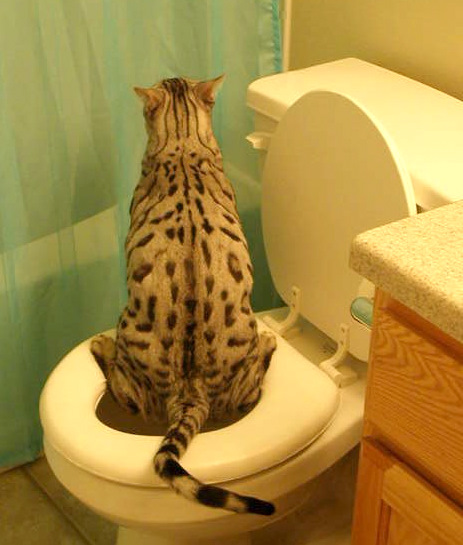Each person will have their personal opinion when it comes to Don’t flush cat feces down the toilet.

Introduction
As pet cat proprietors, it's essential to bear in mind how we throw away our feline close friends' waste. While it might appear practical to purge feline poop down the toilet, this practice can have harmful effects for both the setting and human wellness.
Alternatives to Flushing
Fortunately, there are much safer and much more responsible means to dispose of pet cat poop. Consider the following options:
1. Scoop and Dispose in Trash
The most typical approach of getting rid of cat poop is to scoop it into a biodegradable bag and throw it in the garbage. Make sure to utilize a devoted trash inside story and get rid of the waste without delay.
2. Use Biodegradable Litter
Choose eco-friendly pet cat trash made from products such as corn or wheat. These clutters are environmentally friendly and can be safely thrown away in the garbage.
3. Hide in the Yard
If you have a backyard, consider burying cat waste in a designated area away from vegetable gardens and water resources. Make certain to dig deep adequate to stop contamination of groundwater.
4. Mount a Pet Waste Disposal System
Purchase a pet dog waste disposal system particularly developed for cat waste. These systems utilize enzymes to break down the waste, lowering odor and ecological impact.
Wellness Risks
Along with environmental problems, flushing cat waste can additionally pose health risks to human beings. Pet cat feces might include Toxoplasma gondii, a parasite that can create toxoplasmosis-- a potentially serious disease, particularly for expecting women and people with weakened immune systems.
Ecological Impact
Flushing feline poop introduces dangerous pathogens and bloodsuckers right into the supply of water, posturing a significant danger to marine communities. These pollutants can adversely influence marine life and compromise water high quality.
Final thought
Accountable pet dog possession expands past providing food and shelter-- it also involves proper waste management. By refraining from flushing cat poop down the bathroom and going with alternative disposal methods, we can decrease our ecological impact and safeguard human health.
Why Can’t I Flush Cat Poop?
It Spreads a Parasite
Cats are frequently infected with a parasite called toxoplasma gondii. The parasite causes an infection called toxoplasmosis. It is usually harmless to cats. The parasite only uses cat poop as a host for its eggs. Otherwise, the cat’s immune system usually keeps the infection at low enough levels to maintain its own health. But it does not stop the develop of eggs. These eggs are tiny and surprisingly tough. They may survive for a year before they begin to grow. But that’s the problem.
Our wastewater system is not designed to deal with toxoplasmosis eggs. Instead, most eggs will flush from your toilet into sewers and wastewater management plants. After the sewage is treated for many other harmful things in it, it is typically released into local rivers, lakes, or oceans. Here, the toxoplasmosis eggs can find new hosts, including starfish, crabs, otters, and many other wildlife. For many, this is a significant risk to their health. Toxoplasmosis can also end up infecting water sources that are important for agriculture, which means our deer, pigs, and sheep can get infected too.
Is There Risk to Humans?
There can be a risk to human life from flushing cat poop down the toilet. If you do so, the parasites from your cat’s poop can end up in shellfish, game animals, or livestock. If this meat is then served raw or undercooked, the people who eat it can get sick.
In fact, according to the CDC, 40 million people in the United States are infected with toxoplasma gondii. They get it from exposure to infected seafood, or from some kind of cat poop contamination, like drinking from a stream that is contaminated or touching anything that has come into contact with cat poop. That includes just cleaning a cat litter box.
Most people who get infected with these parasites will not develop any symptoms. However, for pregnant women or for those with compromised immune systems, the parasite can cause severe health problems.
How to Handle Cat Poop
The best way to handle cat poop is actually to clean the box more often. The eggs that the parasite sheds will not become active until one to five days after the cat poops. That means that if you clean daily, you’re much less likely to come into direct contact with infectious eggs.
That said, always dispose of cat poop in the garbage and not down the toilet. Wash your hands before and after you clean the litter box, and bring the bag of poop right outside to your garbage bins.
https://trenchlesssolutionsusa.com/why-cant-i-flush-cat-poop/

We hope you liked our post on Don’t flush cat feces down the toilet. Thanks a ton for taking time to read through our post. Sharing is good. Who knows, you could be helping someone out. I value reading our article about Can You Flush Cat Poo or Litter Down the Toilet?.
Call Today